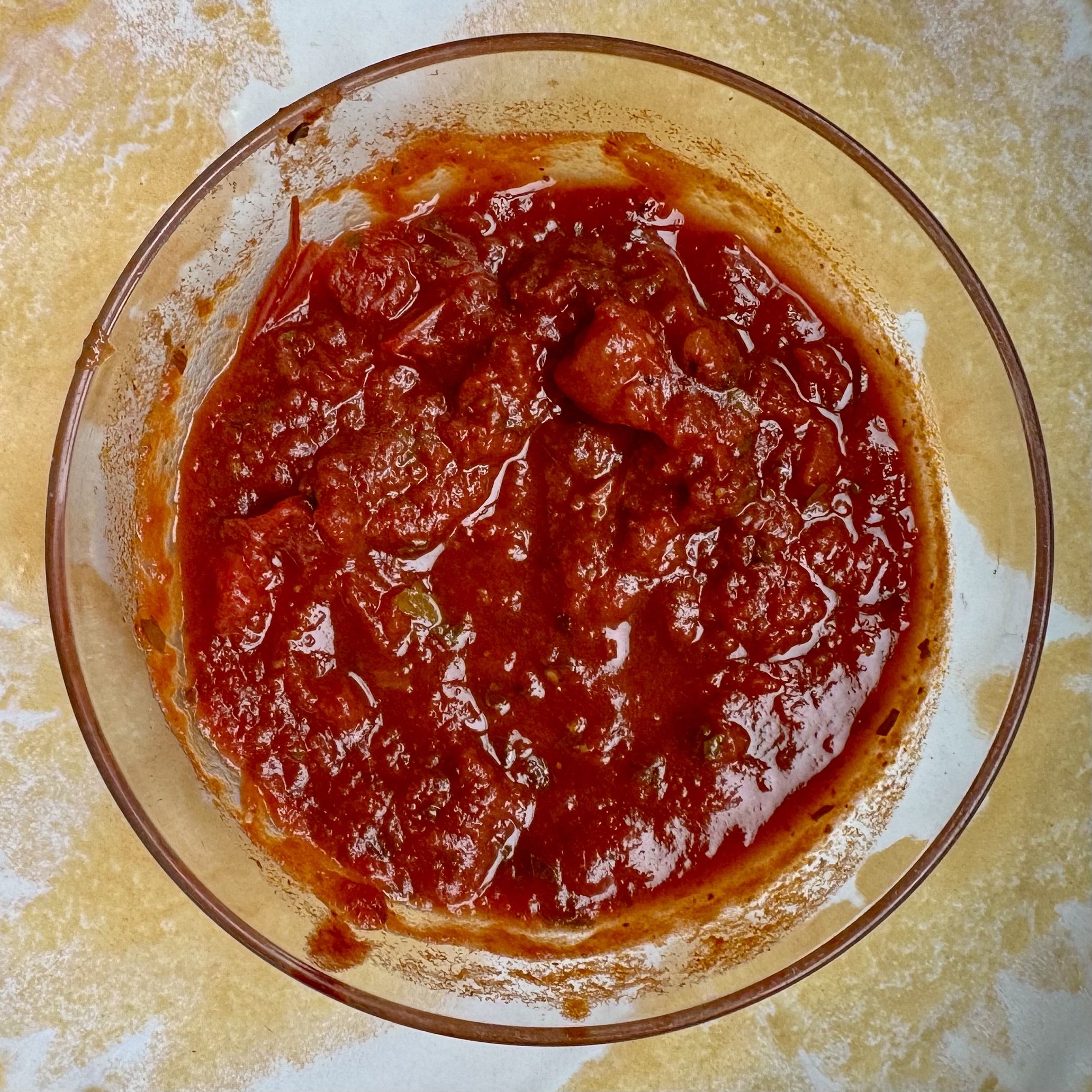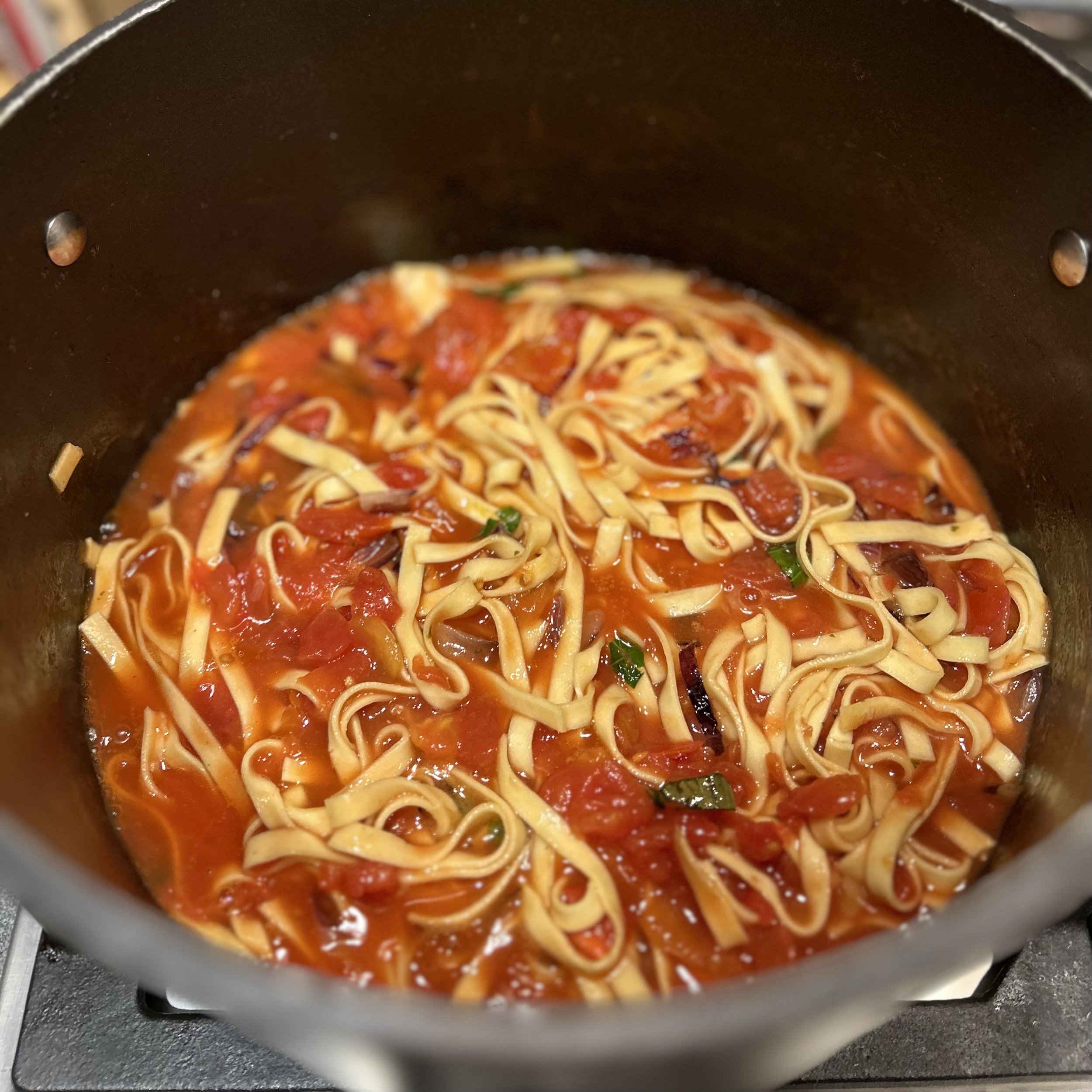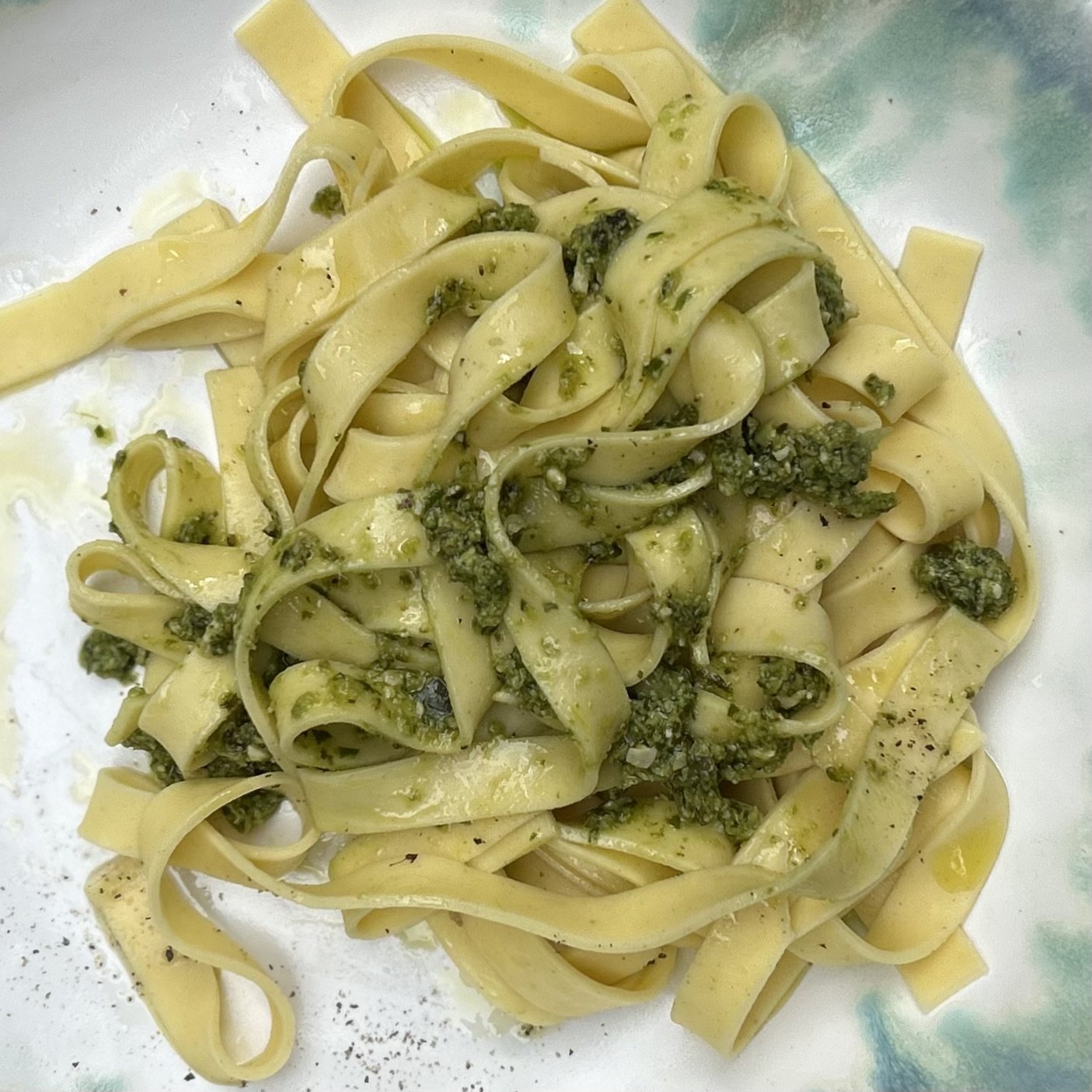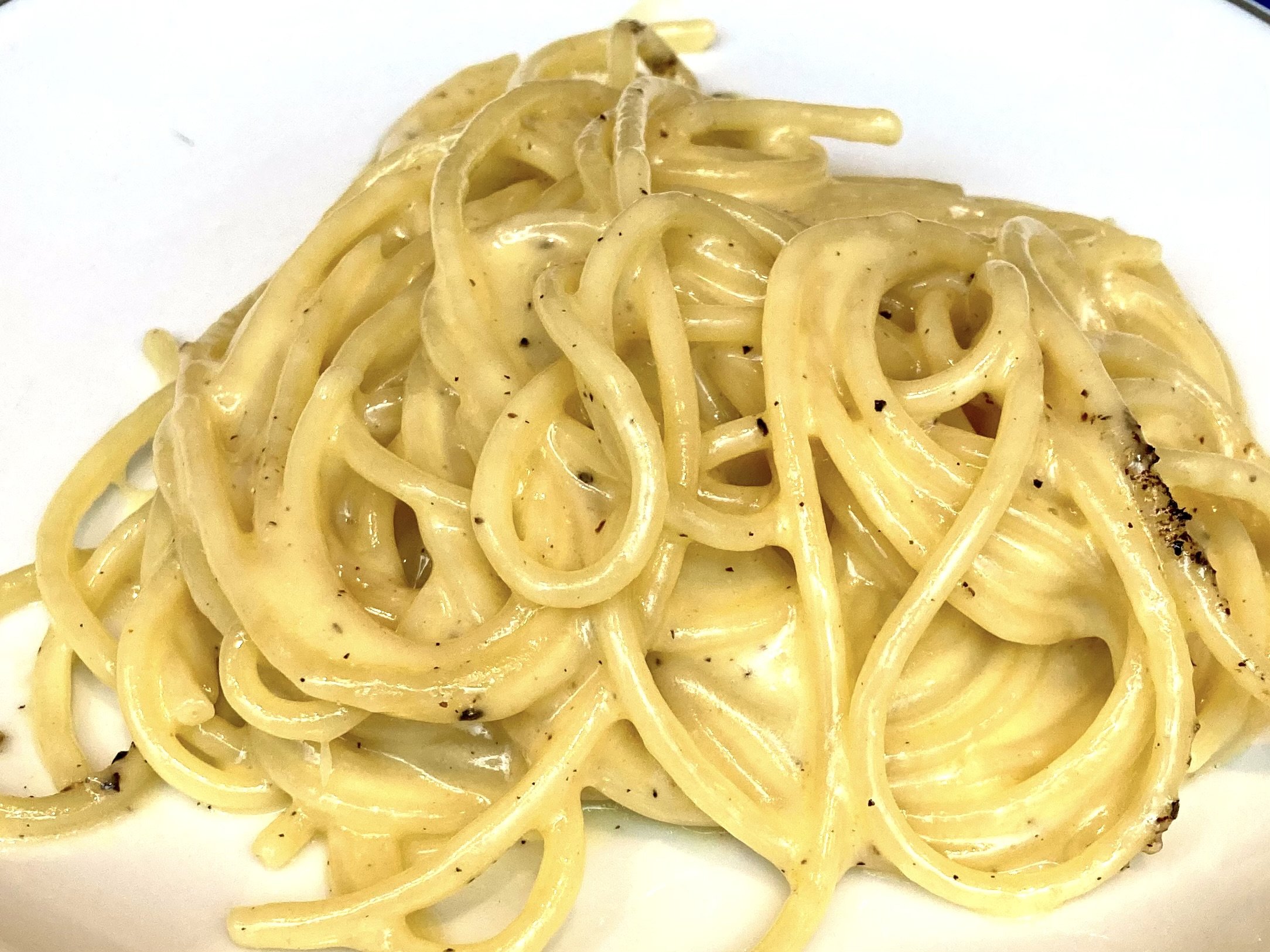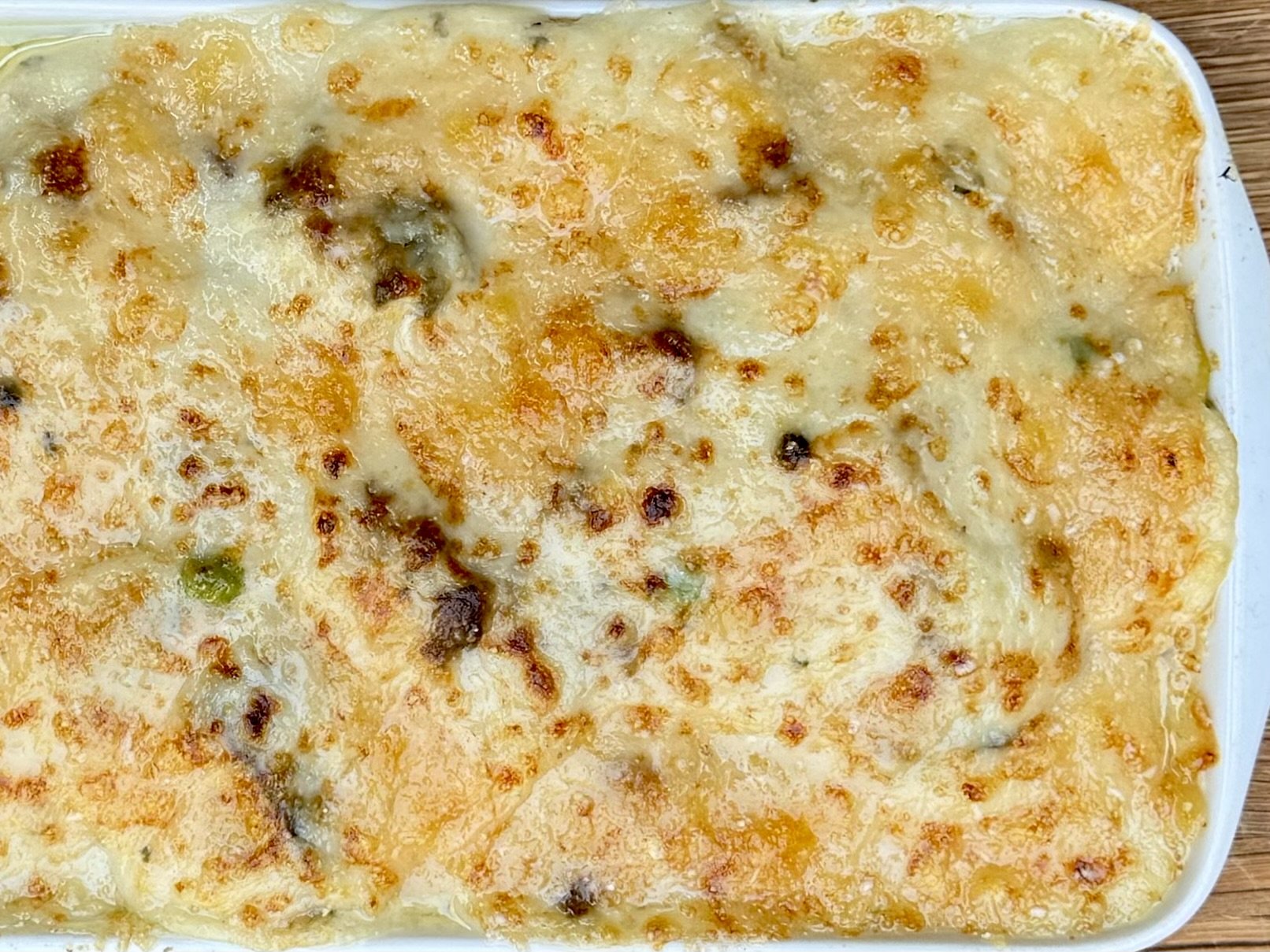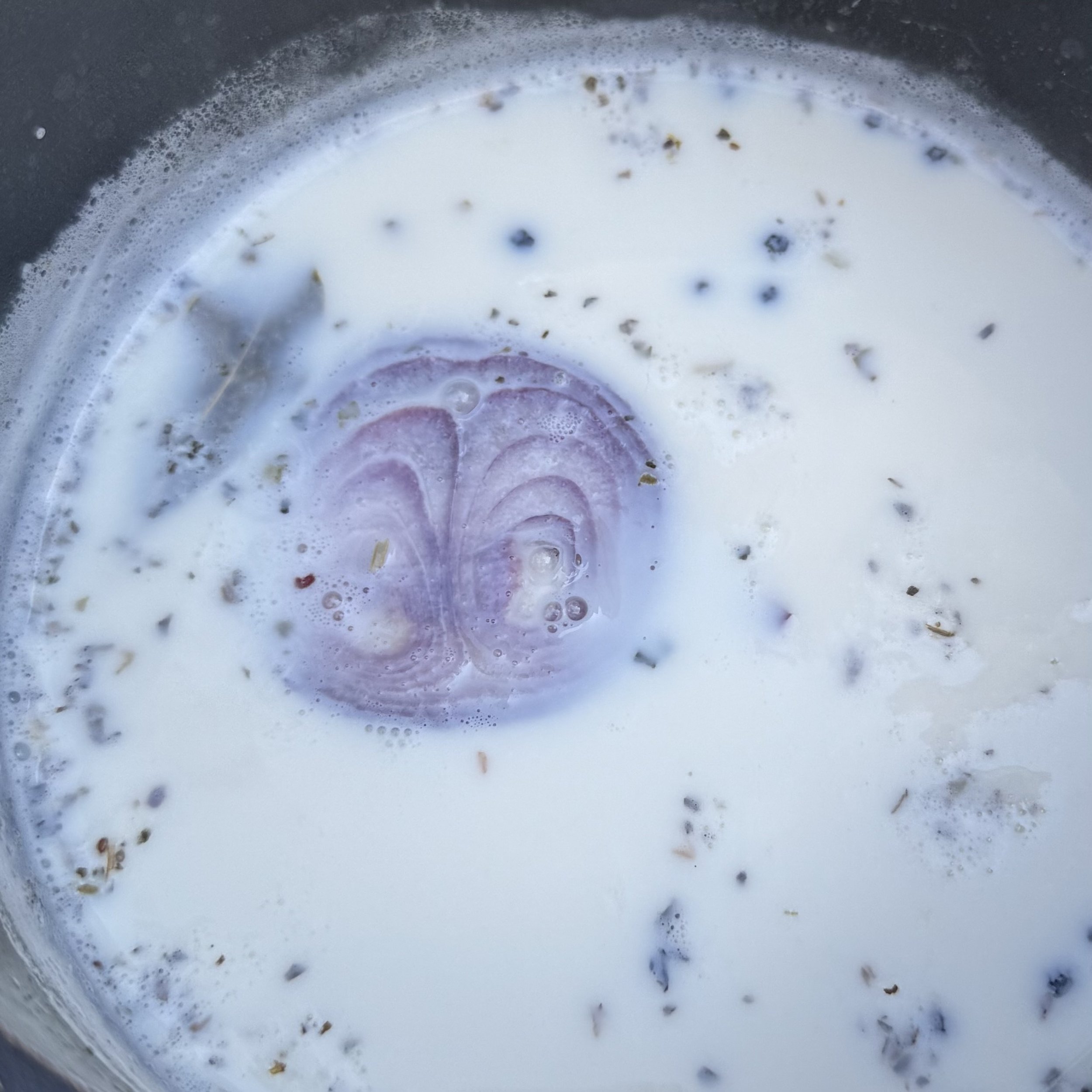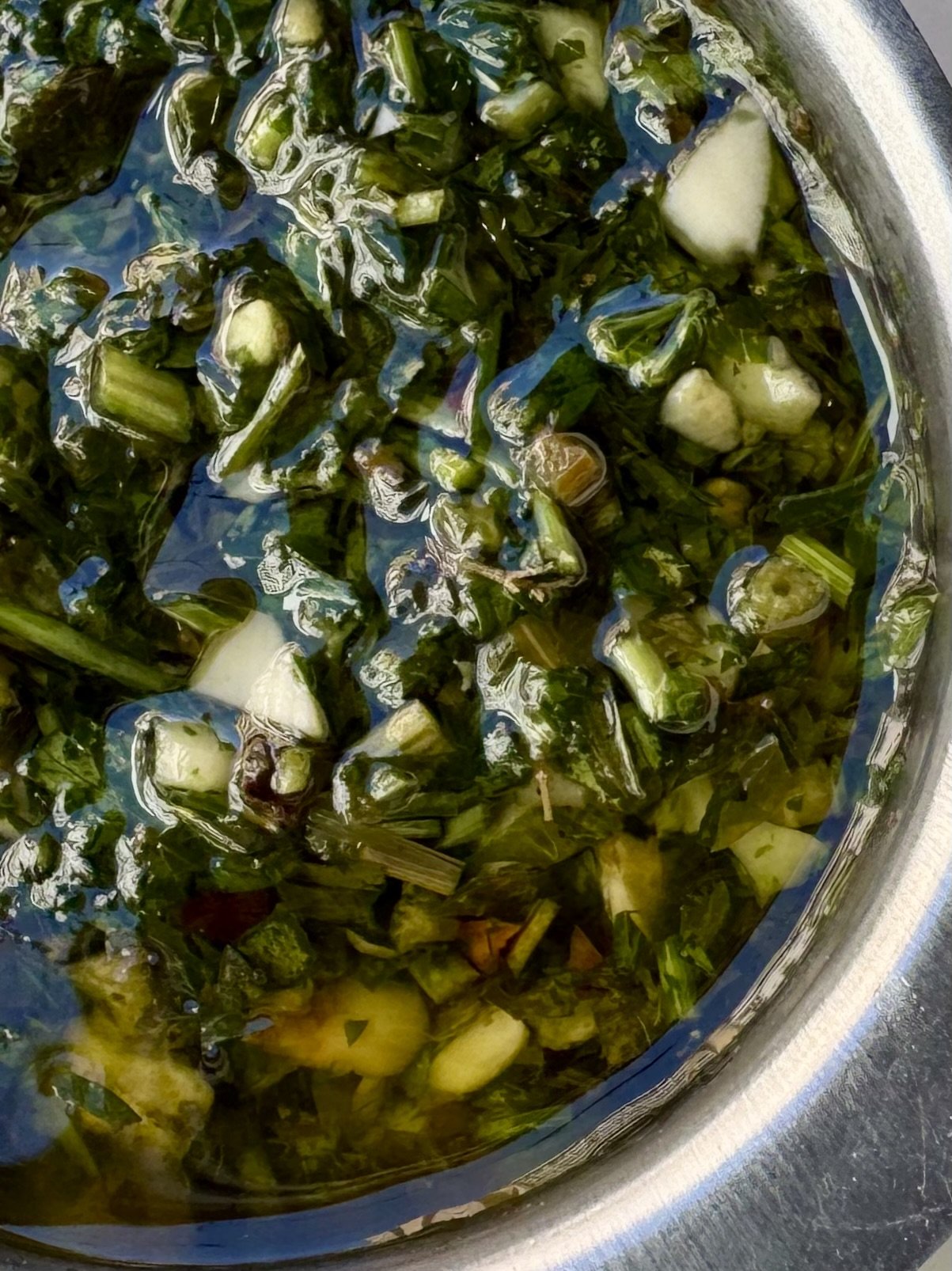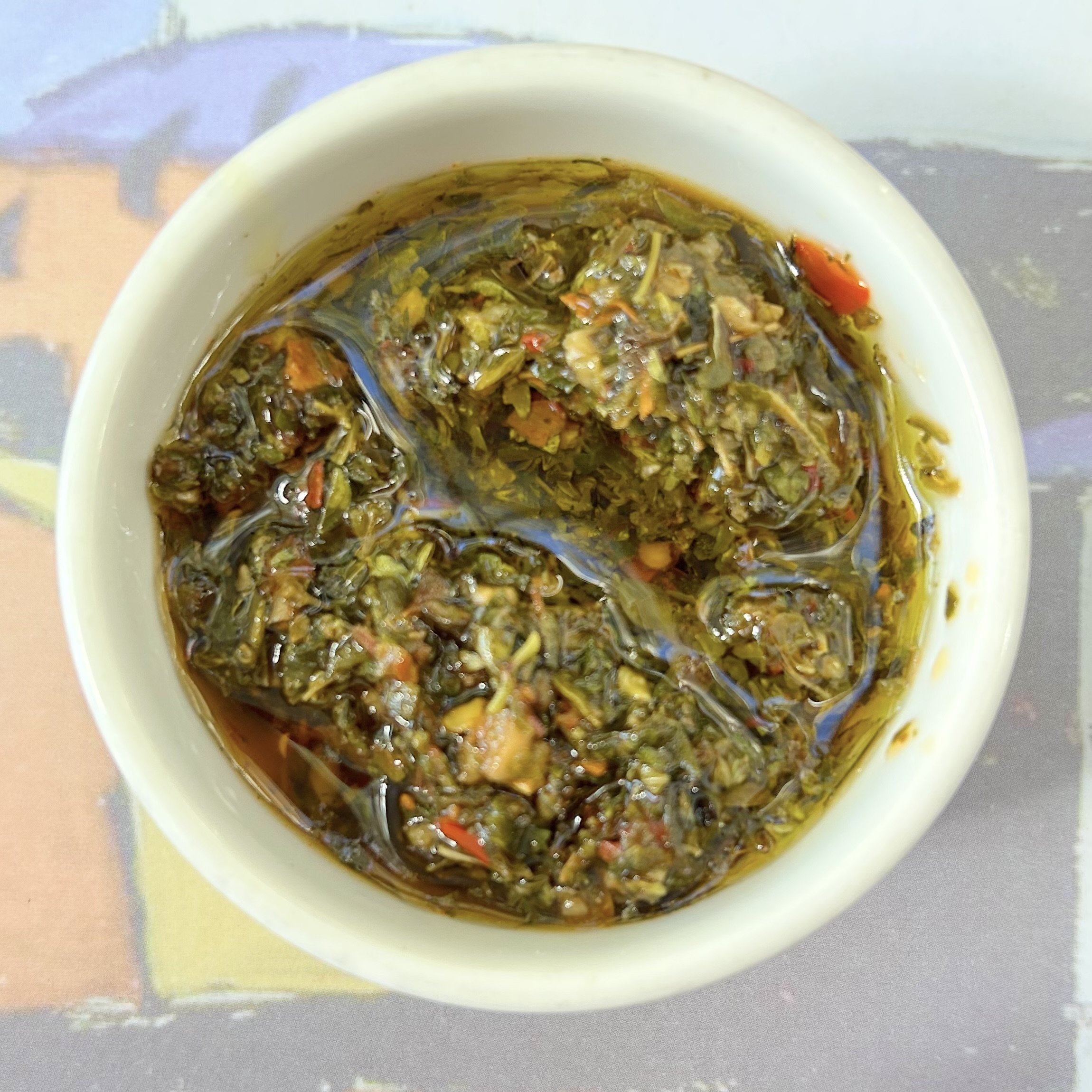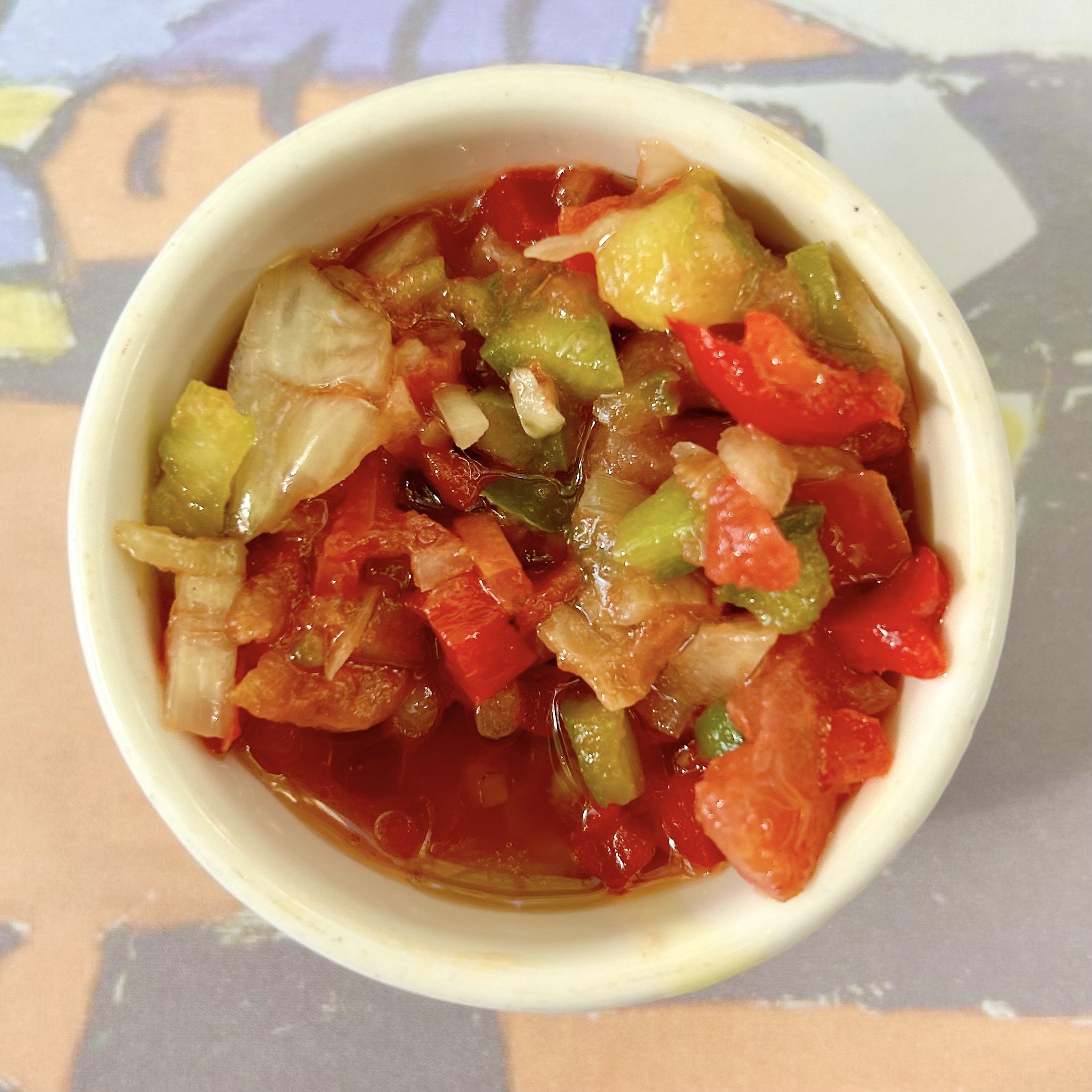Sauces and condiments.
Pomodoro (tomato) sauce.
Pomodoro (tomato) sauce is versatile, easy to prepare and can be made in bulk for later use.
To prepare pomodoro (tomato) sauce: toast ground pepper and spices for 60 seconds in a frying pan. Add extra virgin olive oil and onions and garlic and cook until translucent (avoid burning!). Add chopped tomatoes (fresh or canned), and simmer for 30-45 minutes. Add fresh basil and salt to taste.
Pomodoro sauce, enriched with basil, carrots, aubergine, and red peppers.
Pasta cooking in it’s tomato sauce. Tomato (and marinara, chunky vegetable, or meat-based) sauces can be used to directly cook pasta. This allows the pasta to absorb the sauce as it cooks. Flavours are enhanced by this method and - there are fewer pots to clean!
To cook pasta in it’s sauce: thin the sauce slightly with water or stock, as the pasta will absorb liquid while cooking. Simmer, stir, and add more liquid to keep the sauce from becoming too thick.
Pesto.
Tagliattele with pesto, a blend of fresh basil, garlic, pine nuts, extra-virgin olive oil, and Parmesan cheese.
To prepare pesto, a mixture of pine nuts, lemon juice, and garlic is finely chopped and blended. The basil is added, and the mixture chopped again. Extra virgin olive oil is blended in, and grated parmesano cheese is added and mixed in until combined.
Cacio e pepe sauce.
Spaghetti with cacio e pepe sauce.
To prepare: as pasta (preferably spaghetti) is cooking, heat a large skillet over medium heat. Add ground black pepper and toast for about 1 minute until fragrant. Add ½ cup of pasta water and simmer gently. In a bowl, combine finely grated pecorino romano cheese with a few tablespoons of pasta water. Stir until thick (creamy).
Add the cooked spaghetti to the pan with the toasted pepper and toss well. Remove from heat (a pan that is too hot may separate the sauce) and gradually add the cheese mixture, tossing continuously to coat the pasta. Gently add pasta water until the sauce becomes silky and clings to the pasta. Add extra grated pecorino cheese and a sprinkle of black pepper to taste.
Béchamel sauce.
Béchamel sauce is a versatlie “white sauce.” In this image, it is grilled, covering last night’s baked spaghetti and shiitake mushroom leftovers. It has been covered with parmesano cheese to add flavour.
Infusing (flavouring) milk during preparation of béchamel sauce.
To prepare béchamel: infuse milk by adding a slice of onion, some peppercorns, parsley stalks, and a bay leaf over low heat, and let come to a simmer. In another pan, gently melt the butter, then slowly add flour while stirring over medium heat, keeping the preparation smooth. Add the infused milk, little by little, while stirring to reach a smooth, creamy sauce. Season to taste.
Romesco sauce.
Romesco sauce is a perfect complement to grilled vegetables and meats.
To prepare: bake tomatoes and garlic, add smoked almonds, hazelnuts, sourdough bread crumbs, bell peppers, garlic, and red wine vinegar. Add olive oil as the sauce blends.
Persillade.
Persillade is simple French sauce or seasoning used in southern French and bistro-style cooking with grilled meats, seafood, and roasted vegetables.
Classic persillade contains only parsley and garlic. Olive oil, lemon, vinegar, or butter are optional. Gremolata includes lemon zest.
Chimichurri.
Chimichurri, a perfect companion to grilled or roasted meats (Uruguay, Argentina).
To make chimichurri, finely chop parsley and oregano and combine with minced garlic and red chilli flakes. Add red wine vinegar, olive oil, and lemon juice, and mix well. Add salt and black pepper to taste.
Salsa criolla.
Salsa criolla (Argentina, Uruguay) is a colourful, fresh, tangy, salsa made with simple ingredients, perfect for any dish.
To make salsa criolla, finely dice tomatoes, red and green bell pepper, and onion. In a bowl add chopped parsley, and stir in red wine vinegar, olive oil, and salt and black pepper to taste.
Marinade for meats and vegetables.
To prepare: in a bowl, whisk olive oil, lemon juice or vinegar, and blend in minced garlic, salt, pepper, and herbs and spices (your choice). Honey, mustard, soy sauce, chilli flakes, or other ingredients may add to the flavour.
To marinate meat (or fish) first dry the pieces with cotton (paper) towels and place them a shallow dish (or resealable plastic bag). Pour the marinade over the pieces, fully coating them. If using a bag, gently massage the marinade into the pieces. Let rest for 1-4 hours (15-30 minutes for fish).
Acids (lemon juice, vinegar) tenderise meats, but may break down their texture if too much is used or the marination is too long.
Clarified butter.
Clarified butter has a very high smoke point (232°C) compared to table butter (177°C), allowing for high temperature searing of meats and vegetables. To make clarified butter (butterfat) from table butter, milk proteins and water are removed by heating. Melted butter is brought to a gentle boil, and once the bottom layer of water has boiled off, the remaining butter is filtered through cheesecloth or a coffee filter. It can be refrigerated until use (clarified butter should keep for several months).
Sabayon au xérès custard.
To prepare: mix egg yolks (4 eggs), sugar (1/3 cup), salt (a pinch), and sherry (~ 1/3 cup) and wisk continously over gentle heat (bain-marie double boiler) to a smooth custard (~ 10 minutes). Serve warm over fresh fruit or alone. Double boiling controls heat and avoids curdling, useful for delicate mixtures like sabayon, hollandaise sauce, or melting chocolate.
To double boil: bring water to a simmer. Suspend a heatproof bowl (heat proof glass or metal) in the water. The bowl should sit above the water, not touch it, allowing the steam to provide gentle, indirect heat.
